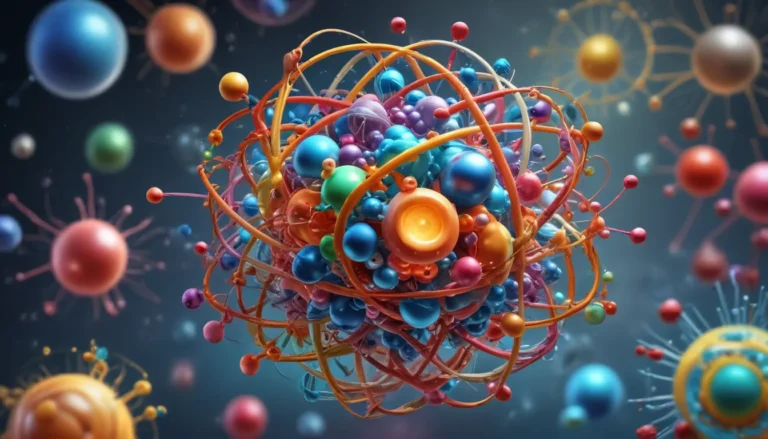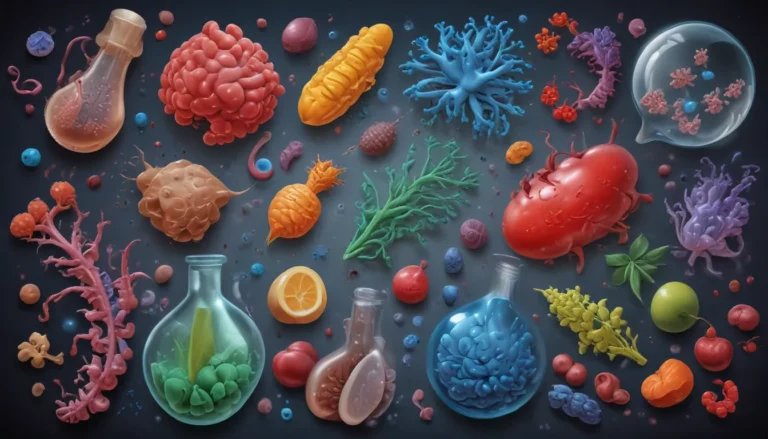A Note About Images: The images used in our articles are for illustration purposes only and may not exactly match the content. They are meant to engage readers, but the text should be relied upon for accurate information.
Chemical bonding is a cornerstone in unraveling the mysteries of molecules. Among the plethora of chemical bonds, pi bonds stand out for their unique role in shaping organic molecules. In this article, we embark on a journey through the captivating realm of pi bonds, uncovering 16 fascinating facts that shed light on their significance and applications.
Whether you’re a chemistry aficionado, a curious student, or simply intrigued by the complexities of chemical bonding, this exploration of pi bonds promises to be both educational and illuminating.
Understanding the Essence of Pi Bonds
Pi bonds are a fundamental type of covalent bond that forms when two atomic orbitals overlap to share electrons, symbolized by the Greek letter ?. These bonds play a pivotal role in the creation of double and triple bonds, contributing to the distinct shapes and properties exhibited by molecules.
The Evolution of Pi Bonds in History
Sir Robert Robinson introduced the concept of pi bonds in the early 20th century to elucidate the structures and behaviors of specific organic compounds. Since then, pi bonds have remained a cornerstone in organic chemistry, shaping our understanding of molecular interactions.
The Orbital Dance of Pi Bonds
In pi bonds, p orbitals overlap, facilitating the sharing of electrons between atoms. This electron-sharing mechanism enables the formation of multiple bonds, enhancing the stability of numerous organic molecules and paving the way for diverse chemical reactions.
Unveiling the Duality of Pi Bonds
Pi bonds manifest in two distinct forms: the classic pi bond arising from the side-by-side overlap of p orbitals and the hybrid pi-lone pair bond formed by the fusion of a hybridized orbital with a p orbital. These variations underscore the versatility and complexity of pi bonding interactions.
Deciphering the Strength Within Pi Bonds
The resilience of a pi bond hinges on factors such as bond length and orbital overlap. While pi bonds are typically weaker than their sigma counterparts, they play a critical role in stabilizing and influencing the reactivity of molecules, unveiling a delicate balance of strength and adaptability.
The Geometric Symphony of Pi Bonds
The presence of pi bonds intricately shapes the geometrical arrangement of molecules, with double and triple bonds inducing unique spatial structures distinct from those formed by single bonds. This geometric diversity underscores the diverse properties conferred by pi bonds.
Pi Bonds: Pioneers of Aromaticity
Pi bonds are pivotal in the genesis of aromatic compounds, imbuing certain planar cyclic structures with a special stability attributable to conjugated pi systems. This aromaticity phenomenon showcases the profound impact of pi bonds on molecular stability.
Embracing the Wandering Electrons of Pi Bonds
A defining attribute of pi bonds is the capacity of electrons to delocalize within the molecular framework. This electron dispersion transcends individual atoms, spanning a broader molecular expanse and enhancing the stability and reactivity of pi bonded compounds.
Pi Bonds in Action: The Tale of Alkenes and Alkynes
Alkenes and alkynes, hydrocarbon molecules characterized by carbon-carbon double and triple bonds respectively, exemplify the transformative power of pi bonds. These bonds, encompassing sigma and pi components, dictate the chemical reactivity of alkenes and alkynes, underscoring the versatility of pi bonds.
Resonance: A Harmonious Symmetry in Pi Bonds
The resonance phenomenon, facilitated by pi bonds, engenders structural stability in select compounds through the delocalization of electrons across diverse atoms or bonds. This resonance-driven stability underscores the intricate interplay between pi bonding interactions and molecular structure.
Crafting Complexity with Pi Bonds in Organic Synthesis
In the realm of organic synthesis, pi bonds are instrumental in the creation of intricate molecules, serving as catalysts for pharmaceuticals, polymers, and a myriad of essential compounds. Chemists harness the reactivity of pi bonds to forge innovative solutions in diverse industries.
Benzene: An Ode to Pi Bonds
Benzene, a quintessential compound replete with multiple pi bonds, epitomizes the intricate interplay of these bonds. Comprising a ring of carbon atoms, each contributing a pi bond, benzene stands as a testament to the aromatic stability and structural elegance facilitated by pi bonding interactions.
Peering into Molecular Orbitals: The Enchantment of Pi Bonds
Molecular orbital theory unveils the intricate dance of pi bonds, where atomic orbitals intertwine to generate bonding and antibonding molecular orbitals. These molecular constructs dictate the electronic structure and behavior of molecules, underscoring the profound impact of pi bonds on molecular dynamics.
Pi Bonds: Catalysts for Scientific Innovation
The exploration of pi bonds and their multifaceted roles in chemical processes serves as a beacon for ongoing research and advancement. Scientists continue to unravel the complexities of pi bonding interactions, unearthing novel applications and groundbreaking discoveries in this dynamic field.
Nurturing Sustainability: The Social and Environmental Legacy of Pi Bonds
A comprehensive understanding of pi bonds in organic chemistry fuels the development of eco-friendly practices and sustainable solutions across diverse industries. Harnessing the unique reactivity of pi bonds enables researchers to forge cleaner and more efficient chemical pathways, fostering a path towards environmental stewardship.
In Conclusion: The Enduring Charm of Pi Bonds
In essence, pi bonds encapsulate a realm of chemistry that embodies structural integrity, reactivity, and unparalleled versatility in molecular interactions. These bonds serve as the bedrock for stability and innovation in organic chemistry, permeating various domains such as pharmaceuticals, materials science, and biochemistry. As our comprehension of pi bonds evolves, we stand poised to unlock new realms of discovery and innovation in the captivating landscape of chemistry.
FAQs: Navigating the Landscape of Pi Bonds
Q: What defines a Pi bond?
A: A Pi bond arises from the overlap of p orbitals between adjacent atoms, forming a covalent bond.
Q: How do Pi bonds differ from Sigma bonds?
A: Sigma bonds result from a direct overlap of atomic orbitals, while Pi bonds stem from a sidelong overlap of p orbitals.
Q: What role do Pi bonds play in organic chemistry?
A: Pi bonds are instrumental in determining the stability, reactivity, and electronic properties of organic compounds.
Q: Can Pi bonds participate in resonance structures?
A: Yes, Pi bonds actively engage in resonance structures, amplifying stability and electron delocalization within molecules.
Q: Are Pi bonds exclusive to organic compounds?
A: While Pi bonds are commonly observed in organic molecules, they also manifest in inorganic species and coordination complexes, showcasing their versatile nature.
Q: How do Pi bonds influence material properties?
A: Pi bonds exert a significant influence on the electronic and bonding characteristics of materials, impacting factors such as conductivity, optical properties, and mechanical strength.
Unlock a world of knowledge and exploration as you delve into the captivating realm of pi bonds. Embark on a journey of discovery, unraveling the intricacies of molecular interactions and paving the way towards a deeper understanding of the chemical world that surrounds us. Join us in our quest for enlightenment as we venture into the dynamic world of pi bonds and ignite a passion for scientific discovery within.
A journey of discovery begins with a single bond – the enigmatic pi bond that shapes the very essence of molecular interactions.
Was this article helpful? At the core of our commitment lies the pursuit of delivering credible and engaging content to our readers. Each fact presented is a testament to the collective wisdom of our vibrant community of users, ensuring a rich tapestry of insights and knowledge. Trust in our dedication to quality and authenticity as we navigate the diverse landscape of chemistry with you.






